Integrated Circuit Design and Devices
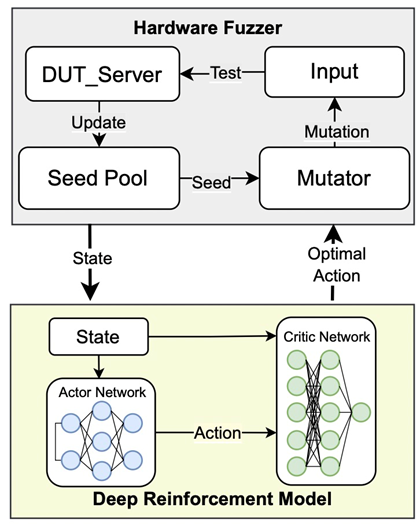
Secure-Fuzz: Fuzzing Test Based on Multiple Intermediate States and Deep Reinforcement Learning
RTL design verification faces significant challenges in generating input sequences that thoroughly test all circuit nodes. Traditional methods, such as formal verification, require substantial expert knowledge and struggle to scale with increasing circuit complexity, while CRV and IFT approaches often suffer from inefficiency, incomplete coverage, or high false positive rates in large designs.To address these limitations, we propose Rare-Node Fuzz. Unlike previous approaches that focus solely on overall node coverage, Rare-Node Fuzz introduces a rare-node metric, specifically designed to enhance the detection of sophisticated hardware Trojans. Our method initiates fuzz testing from multiple circuit states and continuously updates test inputs using deep reinforcement learning. Additionally, we incorporate security-specific conditional branches to enable deeper analysis of target circuits, further increasing testing efficiency and effectiveness.Experimental results show that Rare-Node Fuzz is 2.34 times faster than Genfuzz and achieves 100% detection for many types of hardware Trojans, significantly improving both speed and accuracy over existing techniques.
No PDF Available
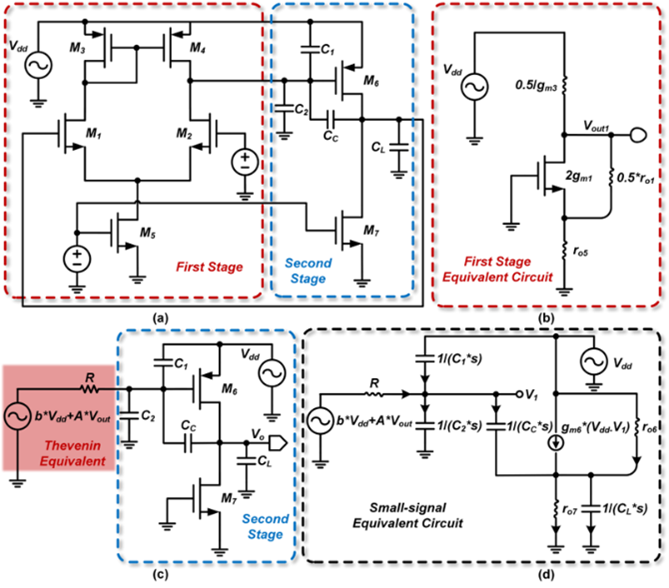
Black-Box Modeling Approach with PGB Metric for PSRR Prediction in Op-Amps
The rapid advancement of electronic technology demands circuit designs that minimize power consumption while maximizing performance. The power supply rejection ratio (PSRR) is a critical metric for quantifying an amplifier's ability to suppress supply noise, yet accurately predicting PSRR in high-frequency domains and complex multi-stage architectures is increasingly challenging. In this work, we introduce a new framework for PSRR prediction that overcomes these limitations. Leveraging a simplified circuit abstraction based on Thevenin's theorem, we reduce multi-stage operational amplifiers to "black-box" models—collapsing intricate small-signal networks into a tractable form without sacrificing accuracy. Building on this foundation, we propose the Power-Supply Rejection Gain-Bandwidth (PGB) metric, which concisely captures the trade-off between an amplifier's DC PSRR and the frequency range over which that rejection is effective. Using PGB, designers gain an intuitive figure-of-merit for early-stage optimization of PSRR. We validate the efficacy of the combined black-box modeling and PGB approach through detailed case studies, including a 180 nm CMOS two-stage op-amp design. These findings confirm that the proposed black-box plus PGB framework can reliably guide the design of analog circuits with stringent PSRR requirements.
Download PDF

High-Linearity Power Amplifier Based on GaAs HBT
This paper presents a power amplifier designed for Wi-Fi 6E using the 2μm gallium arsenide (GaAs) heterojunction bipolar transistor (HBT) process. By employing third-order intermodulation signal cancellation, harmonic suppression, and an adaptive biasing scheme, the linearity performance of the circuit is improved. To achieve broadband performance, the power amplifier also incorporates gain distribution and multi-stage LC matching techniques. The measurement results indicate that, under a 5V supply voltage, it can achieve S21 greater than 31dB, ΔG of ±0.723dB, and P1dB of 30.6dB within the 5.125GHz-7.125GHz frequency band. The maximum linear output power, which satisfies AM-AM < 0.2dB and AM-PM < 1°, is 26.5dBm, and the layout area is 2.34mm².
Download PDF
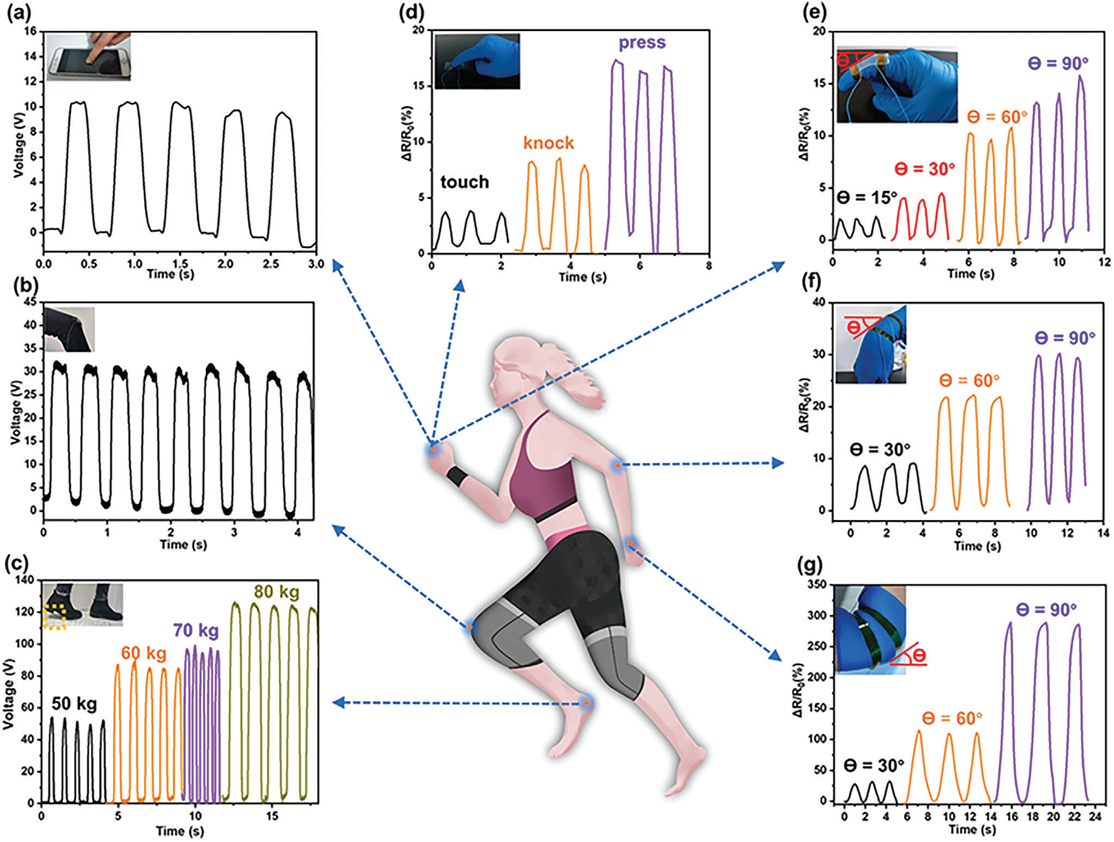
Recent Progress on Barium Titanate–Based Ferroelectrics for Sensor Applications
Sensors, functioning as primary conveyors of perceptual data, stand ready to illuminate the landscape of the intelligent era. Barium titanate, an exceedingly pivotal class of ferroelectric materials for sensor applications, has attracted considerable attention from both commercial and industrial sectors in recent years. Against this backdrop, this paper embarks on a comprehensive examination of sensors founded upon barium titanate across a spectrum of applications. Our investigation commences with a historical analysis of ferroelectric materials, with a specific emphasis on the developmental trajectory of barium titanate. Subsequently, an in-depth exposition elucidates the attributes and manufacturing processes linked to barium titanate materials, providing readers with insight into the structural and manufacturing aspects of these materials. Ultimately, we introduce a diverse array of sensors tailored to distinct functions within a myriad of domains.
Download PDF
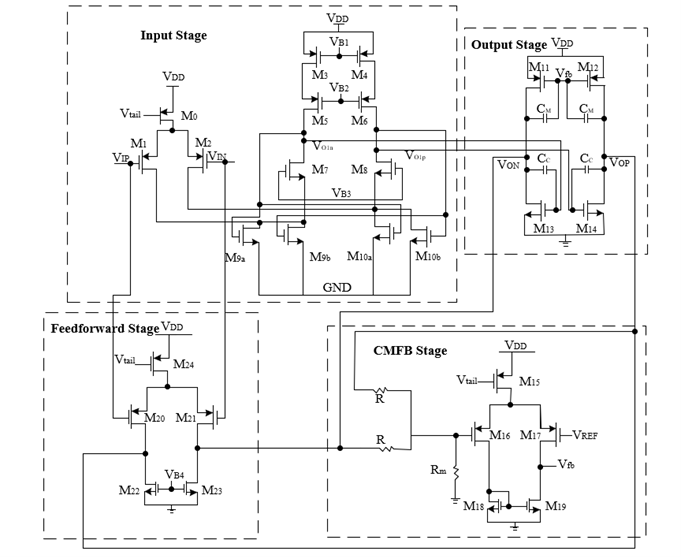
A High-Gain, Low-Power Fully Differential Amplifier with Common-Mode Feedback for High-Speed and High-Precision ADCs
This paper presents a high-gain, low-power fully differential amplifier with common-mode feedback (CMFB) specifically designed for high-speed, high-precision analog-todigital converters (ADCs). Fully differential operational amplifiers (FD-OPAs) are critical in modern analogue signal processing and communication systems due to their enhanced noise immunity, superior linearity, and broad dynamic range. The proposed design integrates an input stage, output stage, feedforward stage, CMFB circuit, and a wide-swing biasing network, all contributing to optimized performance metrics. The folded cascade input stage provides high gain and a wide input common-mode range, while the common-source output stage ensures low output impedance and high driving capability. The feedforward stage improves high-frequency performance by introducing a zero to compensate for phase delay, and the CMFB circuit provides a stable common-mode output level. Simulated in a 180-nm CMOS process with a 1.8 V supply, the design achieves a gain-bandwidth product (GBW) of 111 MHz, a differential DC gain of 83 dB, and a phase margin exceeding 60° across process corners. Monte Carlo analysis confirms robust performance and low noise, validating its efficacy for high-speed, high-precision ADCs. A comparative analysis demonstrates significantly better performance than prior works, particularly regarding gain, power efficiency, and figure of merit (FOM).
Download PDF
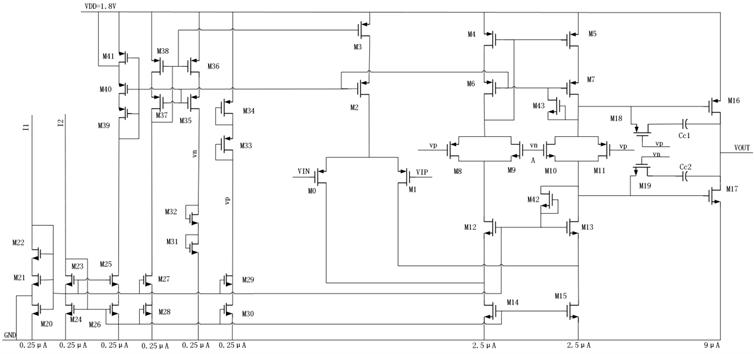
A High-Gain Low-Power Low-Noise CMOS Transconductance Amplifier
To achieve high gain, low power consumption and low noise, An operational transconductance amplifier(OTA) connecting folded-cascode stage and class-AB stage with translinear loops is presented in this paper. Using 180nm CMOS library in terms of the parameters, the introduced OTA exhibits a transconductance gain of 112dB, the gain bandwidth of 4.9MHz, and the input referred noise of 5.1μV in the 1-100Hz range.The entire transconductance amplifier circuit consumes 28μW of power from a 1.8V supply when the bias source provides a current of 0.25μA and the input bias voltage is 900mV.
Download PDF
Deep Learning
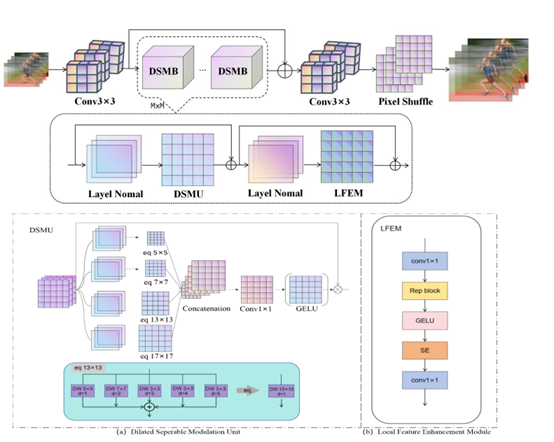
A Super-Resolution Reconstruction Method for Lightweight Building Images Based on an Expanding Feature Modulation Network
This study proposes a lightweight method for building image super-resolution using a Dilated Contextual Feature Modulation Network (DCFMN). The process includes obtaining high-resolution images, down-sampling them to low-resolution, enhancing the low-resolution images, constructing and training a lightweight network model, and generating super-resolution outputs. To address challenges such as regular textures and long-range dependencies in building images, the DCFMN integrates an expansion separable modulation unit and a local feature enhancement module. The former employs multiple expansion convolutions equivalent to a large kernel to efficiently aggregate multi-scale features while leveraging a simple attention mechanism for adaptivity. The latter encodes local features, mixes channel information, and ensures no additional computational burden during inference through reparameterization. This approach effectively resolves the limitations of existing lightweight super-resolution networks in modeling long-range dependencies, achieving accurate and efficient global feature modeling without increasing computational costs, and significantly improving both reconstruction quality and lightweight efficiency for building image super-resolution models.
Download PDF

Deep Learning Advances in Vision-Based Traffic Accident Anticipation: A Comprehensive Review of Methods, Datasets, and Future Directions
Traffic accident prediction and detection are critical for enhancing road safety, and vision-based traffic accident anticipation (Vision-TAA) has emerged as a promising approach in the era of deep learning. This paper reviews 147 recent studies, focusing on the application of supervised, unsupervised, and hybrid deep learning models for accident prediction, alongside the use of real-world and synthetic datasets. Current methodologies are categorized into four key approaches: image and video feature-based prediction, spatiotemporal feature-based prediction, scene understanding, and multimodal data fusion. While these methods demonstrate significant potential, challenges such as data scarcity, limited generalization to complex scenarios, and real-time performance constraints remain prevalent. This review highlights opportunities for future research, including the integration of multimodal data fusion, self-supervised learning, and Transformer-based architectures to enhance prediction accuracy and scalability. By synthesizing existing advancements and identifying critical gaps, this paper provides a foundational reference for developing robust and adaptive Vision-TAA systems,contributing to road safety and traffic management.
Download PDF